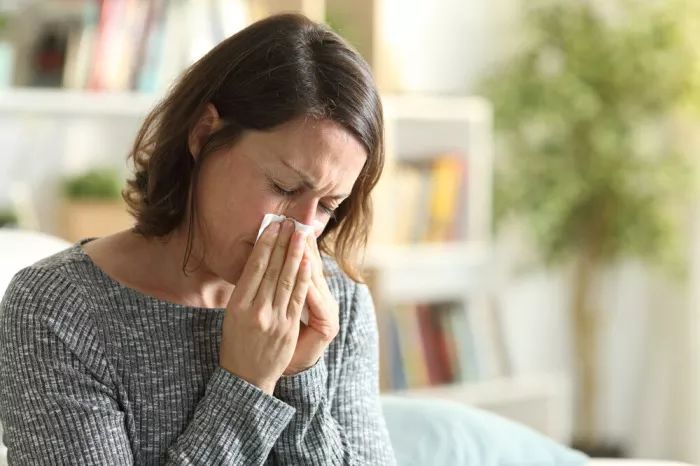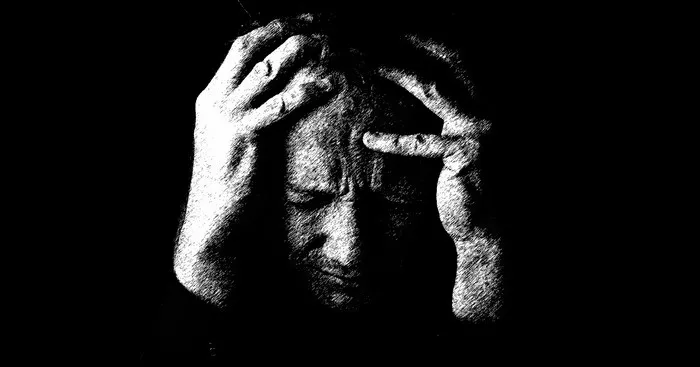Scars, whether from acne, injuries, or surgeries, can have a lasting impact on an individual’s self-esteem and confidence. Fortunately, advancements in medical technology have led to the development of laser scar removal procedures, offering a promising solution to minimize the appearance of scars. One of the most common questions individuals have when considering laser scar removal is, “How many sessions will I need?” This article delves into this question and provide a comprehensive understanding of the process.
[inline_related_posts title=”SEE ALSO” title_align=”left” style=”list” number=”2″ align=”none” ids=”1275,505″ by=”categories” orderby=”rand” order=”DESC” hide_thumb=”no” thumb_right=”no” views=”no” date=”yes” grid_columns=”1″ post_type=”” tax=””]
Understanding Laser Scar Removal
Laser scar removal is a non-invasive medical procedure that uses focused laser energy to target and break down scar tissue. The process stimulates the skin’s natural healing mechanisms, encouraging the growth of new, healthier tissue. The procedure is effective for various types of scars, including hypertrophic scars, keloids, and atrophic scars, which result from a loss of tissue.
Factors Influencing the Number of Laser Scar Removal Sessions
Several factors can influence the sessions needed for laser scar removal:
1. Scar Type and Severity
The type and severity of the scar play a crucial role in determining the number of laser scar removal sessions required. Superficial scars might require fewer sessions compared to deeper, more extensive scars. Hypertrophic and keloid scars, which result from excessive collagen production, may need additional sessions due to their complex nature.
2. Skin Type
Different skin types react differently to laser treatments. Fair skin tends to respond more favorably, while individuals with darker skin tones may need extra caution to avoid potential pigment changes. More sessions might be necessary for individuals with darker skin to achieve optimal results safely.
3. Laser Technology Used
Various laser technologies are available for scar removal, including fractional lasers and intense pulsed light (IPL) devices. The choice of technology can influence the number of sessions needed. Fractional lasers, for instance, treat only a fraction of the skin, requiring multiple sessions for complete coverage and better healing between sessions.
4. Scar Size and Location
The size and location of the scar on the body also impact the treatment process. Larger scars might need more sessions, as they cover a larger surface area. Additionally, scars located on areas with thicker skin, such as the back, might require more sessions than those on areas with thinner skin.
5. Individual Healing Response
Every individual’s body responds uniquely to laser treatments. Some people might experience quicker healing and improved results in fewer sessions, while others may need more sessions to achieve the desired outcome. Genetics, lifestyle, and overall health can influence the body’s healing response.
Typical Number of Laser Scar Removal Sessions
While the exact number of sessions varies based on the factors mentioned above, a general guideline can help individuals understand what to expect.
1. Minor Scars: 3-5 Sessions
For superficial scars or minor imperfections, individuals might need around 3 to 5 sessions to achieve noticeable improvements. These scars are generally less deep and respond more quickly to laser treatments.
2. Moderate Scars: 5-7 Sessions
Scars that are slightly deeper or more extensive may require 5 to 7 sessions for significant improvement. This category includes scars from mild to moderate acne, small surgical scars, and minor injuries.
3. Severe Scars: 7+ Sessions
Deeper scars, such as hypertrophic scars and keloids, as well as more extensive surgical scars, might necessitate 7 or more sessions to achieve optimal results. The complexity of these scars requires a more thorough treatment approach over an extended period.
Risks and Side Effects in Multiple Laser Scar Removal Sessions
Like any medical procedure, there are potential risks and side effects associated with multiple laser sessions for scar removal. While laser scar removal is generally considered safe when performed by trained professionals, there are a few risks individuals should be aware of:
1. Hyperpigmentation or Hypopigmentation
One of the common concerns associated with laser scar removal is changes in skin pigmentation. Hyperpigmentation, which refers to darkening of the skin, or hypopigmentation, which is a lightening of the skin, can occur after laser treatments. This risk is more pronounced for individuals with darker skin tones. Professionals take precautionary measures to minimize these risks, such as adjusting the laser settings based on the patient’s skin type.
2. Scarring
Ironically, laser scar removal could potentially lead to scarring if not performed correctly. This risk is relatively low when carried out by experienced and skilled practitioners. Choosing a reputable clinic with a history of successful scar removal treatments is essential to reduce the chances of adverse outcomes.
3. Skin Sensitivity and Irritation
Following each laser session, individuals might experience temporary skin sensitivity, redness, and irritation. These effects are usually short-lived and subside within a few days. Adequate post-treatment care, including the use of recommended skincare products, can help alleviate these symptoms.
4. Infection
Any procedure that involves disrupting the skin’s barrier carries a slight risk of infection. However, this risk is minimized through proper sanitation and post-treatment care. It’s crucial to adhere to the medical professional’s guidelines to prevent infection.
5. Pain and Discomfort
During laser sessions, individuals may experience mild discomfort or a sensation often described as a rubber band snapping against the skin. Most practitioners use cooling techniques to minimize discomfort. If the pain becomes unbearable, communicating with the provider can lead to adjustments in the treatment process.
Considerations and Aftercare of Laser Scar Removal
Before and after laser scar removal, one would better not forget follows:
1. Consultation and Customization
Before undergoing laser scar removal, a consultation with a qualified dermatologist or medical professional is crucial. They will assess the scar’s type, severity, and the patient’s skin type to determine the most suitable treatment plan, including the estimated number of sessions.
2. Interval Between Sessions
To ensure proper healing and minimize the risk of complications, there is usually a recommended interval between laser sessions. This interval allows the skin to recover and regenerate adequately before undergoing the next treatment. Typically, sessions are spaced 4 to 6 weeks apart.
3. Post-Treatment Care
After each session, following post-treatment care instructions is vital for successful scar removal. This may include applying recommended creams, avoiding sun exposure, and keeping the treated area clean and moisturized.
4. Patience for Results
Results from laser scar removal are not instantaneous. It takes time for the skin to heal, regenerate, and display the desired improvement. Patience is key, and individuals should not be discouraged if they don’t see immediate results.
Enhancing Laser Scar Removal: Combining Additional Treatments and Therapies
The concept of combining different treatments and therapies to achieve more effective results is not new in the field of dermatology. For scars that may require extra attention or have specific characteristics, a combination of approaches can offer a synergistic effect, addressing different aspects of scar tissue and skin rejuvenation.
1. Microneedling
Microneedling, also known as collagen induction therapy, involves using a device with fine needles to create controlled micro-injuries in the skin. This process stimulates the body’s natural healing response, promoting collagen production and improving skin texture. When combined with laser scar removal, microneedling can enhance the penetration of topical treatments and improve the overall texture and appearance of the scarred area.
2. Chemical Peels
Chemical peels involve applying a chemical solution to the skin, which causes the top layer to peel off, revealing smoother, regenerated skin underneath. Certain types of chemical peels can complement laser scar removal by promoting cell turnover, reducing pigmentation, and enhancing the effectiveness of laser treatments.
3. Topical Treatments
Topical treatments, such as silicone gels, vitamin E creams, and scar-reducing ointments, can be used in conjunction with laser sessions. These treatments can help soften scar tissue, reduce inflammation, and improve overall skin health. Combining laser scar removal with targeted topical applications can yield more comprehensive results.
4. Platelet-Rich Plasma (PRP) Therapy
PRP therapy involves using a patient’s own blood plasma, rich in growth factors, to promote tissue regeneration and healing. PRP can be applied topically or injected into the scarred area, further enhancing collagen production and improving the skin’s texture and tone.
5. Dermal Fillers
Dermal fillers, often used to address wrinkles and volume loss, can also be employed to treat certain types of scars. By injecting fillers beneath the scar, the skin’s surface can be lifted to create a smoother appearance.
6. Fractional Laser Resurfacing
Fractional laser resurfacing is another laser-based treatment that complements traditional laser scar removal. It involves targeting microscopic columns of skin while leaving surrounding tissue untouched, promoting faster healing and collagen production. This approach can be especially beneficial for more extensive scars.
7. Cryotherapy
Cryotherapy involves using extreme cold to freeze and destroy scar tissue. When combined with laser scar removal, cryotherapy can enhance the scar’s response to laser energy, providing more comprehensive results.
8. Laser-assisted Drug Delivery
Some practitioners use lasers to enhance the delivery of therapeutic agents or medications into the skin. This technique can help accelerate healing and improve the effectiveness of scar removal treatments.
Conclusion
Laser scar removal offers a promising solution for individuals seeking to reduce the appearance of scars and regain their self-confidence. The number of sessions required depends on several factors, including scar type, severity, skin type, and laser technology used. While minor scars might need 3 to 5 sessions, more severe scars could require 7 or more sessions for optimal results. Consulting a medical professional, adhering to post-treatment care, and maintaining patience throughout the process are essential for a successful outcome. With advancements in laser technology and personalized treatment plans, individuals can look forward to smoother, rejuvenated skin and a renewed sense of self-assurance.
[inline_related_posts title=”Related Topics” title_align=”left” style=”list” number=”3″ align=”none” ids=”1353,1327,1279″ by=”categories” orderby=”rand” order=”DESC” hide_thumb=”no” thumb_right=”no” views=”no” date=”yes” grid_columns=”1″ post_type=”” tax=””]



































